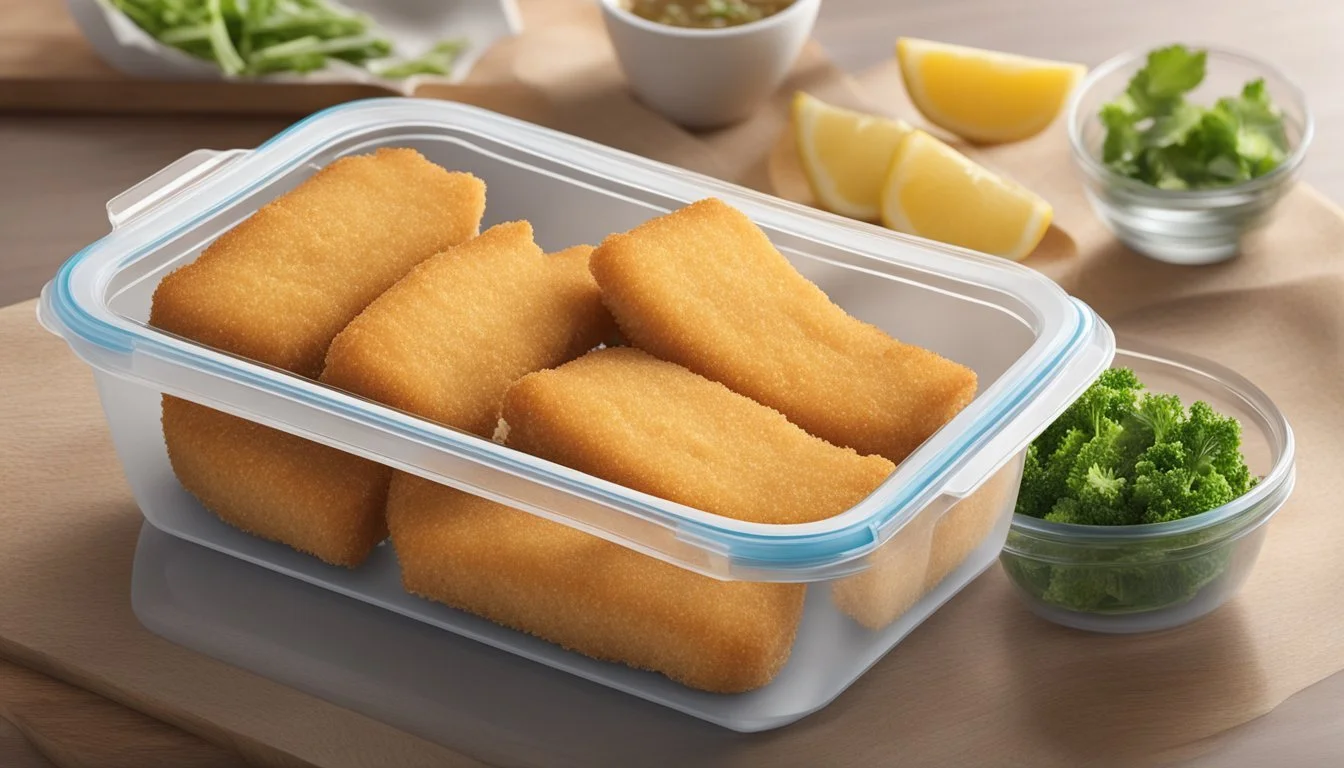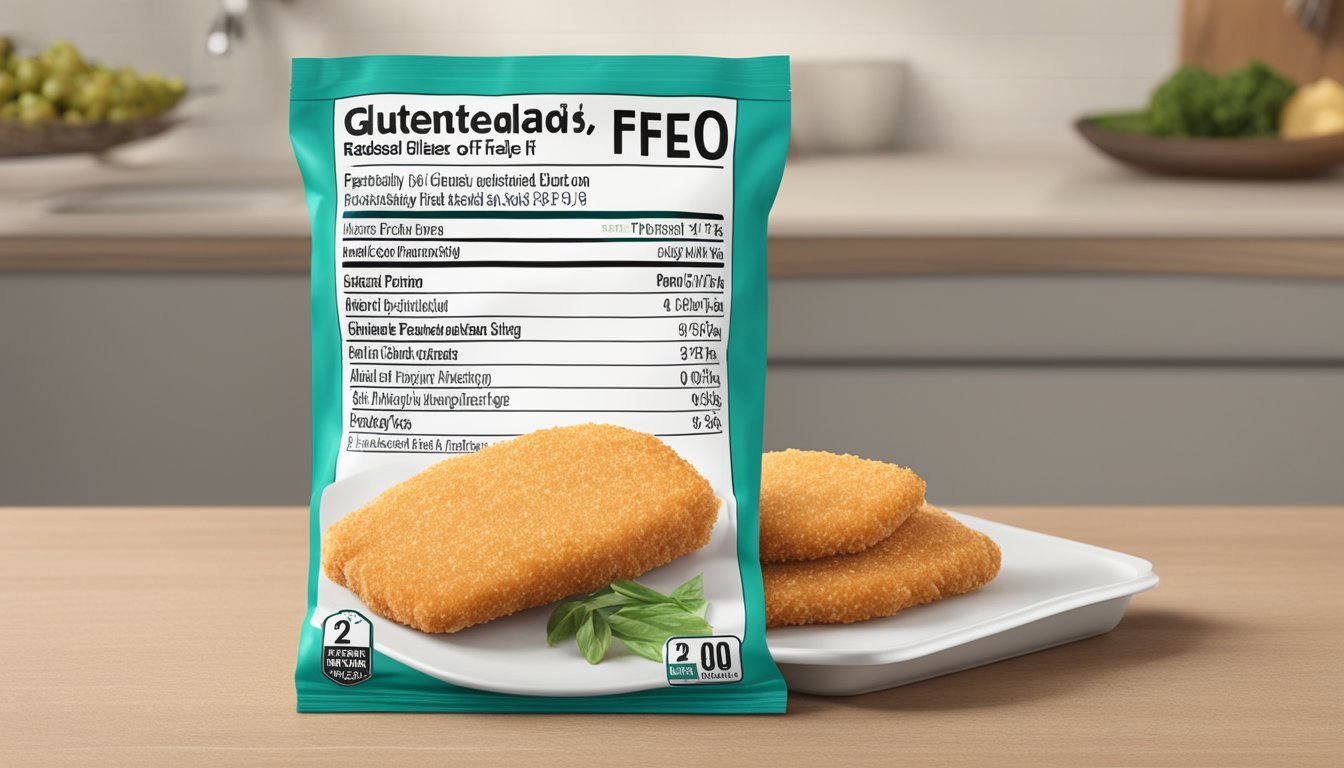How Long Do Gluten-Free Breaded Fish Fillets Last?
Storage Tips and Shelf Life
Storing gluten-free breaded fish fillets properly can ensure they remain fresh and delicious for as long as possible. Generally, gluten-free breaded fish fillets can last in the freezer for up to 3 months if kept at a constant temperature of 0°F (-18°C). This time frame ensures that the fish maintains optimal taste and texture.
When kept in the refrigerator at 40°F (4°C), these fillets should be consumed within 2 days to avoid any possible degradation in quality and potential health risks. It's essential to seal them in an airtight container or vacuum-sealed bag to prevent contamination and freezer burn.
Understanding how long gluten-free breaded fish fillets last can help in planning meals and reducing food waste. By following these storage guidelines, individuals can enjoy their gluten-free breaded fish without compromising safety and flavor.
Understanding Gluten-Free Breaded Fish Fillets
Gluten-free breaded fish fillets cater to those with gluten sensitivities and provide a delicious, safe alternative. These fillets utilize specific ingredients and careful preparation methods to ensure they remain allergen-free.
Ingredients and Allergen Information
Gluten-free breaded fish fillets often use alternative flours such as rice flour or tapioca starch instead of all-purpose flour. These alternatives help maintain a crispy texture without gluten.
For the breading, gluten-free breadcrumbs or almond flour are common choices. Seasonings like garlic powder, paprika, and onion powder add flavor.
It's crucial to check that all ingredients, including seasonings, are certified gluten-free. This ensures the final product is safe for consumption by those with gluten sensitivities. The ingredients should also be free from dairy, making the dish suitable for those with lactose intolerance. This meticulous approach to ingredient selection helps in maintaining both texture and taste while keeping the dish allergen-free.
Storage Guidelines
Proper storage of gluten-free breaded fish fillets is essential to maintain their freshness and extend their shelf life. Here are key methods and considerations for refrigerating and freezing these fillets, including important details about best before and expiration dates.
Refrigeration and Freezing
Refrigerated gluten-free breaded fish fillets should be stored at temperatures below 40°F (4°C). Use an airtight container or wrap the fillets tightly in plastic wrap to minimize exposure to air and moisture. Incorporating paper towels during storage can help absorb excess water, preserving texture.
For frozen storage, fillets should be placed in freezer-safe bags or containers. Label these with the date of freezing for easy tracking. Frozen fillets generally maintain quality for up to three months. Ensure the temperature is consistent at 0°F (-18°C) or lower to prevent any degradation in quality.
Best Before and Expiration Dates
If commercially packaged, gluten-free breaded fish fillets will have a best before or expiration date indicated. Consumption within this period guarantees optimal quality. However, these dates are often more about quality than safety.
After the best before date, the texture and flavor may decline, especially if not stored properly. When handling homemade gluten-free fish fillets, it's advisable to consume them within 3-4 days if refrigerated. For frozen homemade fillets, aim to use them within three months for best results. Always inspect for off smells or changes in appearance before consuming.
Preparation Methods for Optimal Quality
Proper preparation is key to ensuring that gluten-free breaded fish fillets maintain their quality and taste. The following techniques will guide you on thawing, marinating, and cooking methods for the best results.
Thawing and Marinating Techniques
When using frozen fish fillets, thawing is a crucial step. It is recommended to thaw them in the refrigerator for several hours, preferably overnight. This method ensures a slow and even thaw, which helps preserve the texture and moisture of the fish.
Once thawed, marinating the fish can enhance its flavor. A simple marinade with lemon juice, olive oil, garlic, and herbs for 15-30 minutes can impart extra taste. Avoid marinating for too long as the acid in the lemon juice can start to "cook" the fish.
For those short on time, a quick thaw can be done by sealing the fish in a plastic bag and submerging it in cold water for about 30 minutes. Ensure the water is changed every 10 minutes.
Cooking Methods
When it comes to cooking gluten-free breaded fish, there are several methods to achieve a crispy and delicious result. Frying in hot oil for 3-4 minutes on each side can yield a golden brown finish. Preheat the oil in a skillet to medium-high heat before adding the fish.
Baking is another option. Preheat the oven to 375°F (190°C) and place the fillets on a lined baking sheet. Bake for 12-15 minutes, turning halfway through, until the fish is cooked through and the breadcrumb coating is crispy.
Using an air fryer is gaining popularity due to its ease and health benefits. Preheat the air fryer to 400°F (200°C). Cook the fillets for 8-10 minutes, flipping them at the halfway mark to ensure even cooking and crispiness.
Each method has its benefits, so choose according to the desired texture and available equipment. Thawing and preparation significantly impact the end quality, ensuring a delightful meal every time.
Health and Nutritional Information
Gluten-free breaded fish fillets can be part of a balanced diet, providing essential nutrients without the gluten. They are often chosen for their dietary compatibility and nutritional benefits.
Caloric and Macronutrient Profile
Gluten-free breaded fish fillets typically offer a moderate calorie count. For instance, a serving of Good Graces' fillets contains around 200-300 calories.
These fillets are a good source of protein, with an average serving providing approximately 15-20 grams of protein, which is vital for muscle maintenance and growth.
Carbohydrates in these fillets come mainly from the gluten-free breading, contributing roughly 15-25 grams per serving.
Regarding fats, these fish fillets contain both saturated and unsaturated fats, with saturated fat making up about 2-4 grams per serving. They often have minimal trans fats.
Cholesterol content can vary, typically around 50-70 milligrams per serving. Sodium levels may be noteworthy, often ranging from 300-600 milligrams per serving, which is something to consider for those monitoring their sodium intake.
Flavor Enhancement and Serving Suggestions
Enhancing the flavor of gluten-free breaded fish fillets can be achieved through thoughtful seasoning and creative serving ideas. This guide covers ideal condiments, accompaniments, and innovative recipes to elevate your meal.
Condiments and Accompaniments
Homemade tartar sauce: Combine mayonnaise, chopped pickles, lemon juice, and fresh parsley. This classic condiment pairs well with the crispy texture of the fish.
Lemon wedges: A squeeze of lemon juice brings a fresh, tangy flavor that brightens the dish.
Seasoned french fries: For a traditional fish and chips experience, serve with crispy, golden-brown fries seasoned with salt, pepper, and smoked paprika.
Herbed mayonnaise: Mix mayonnaise with finely chopped herbs like cilantro and parsley. This adds a fresh aromatic note.
Coleslaw: A side of coleslaw made with cabbage, carrot, and a light vinegar dressing can add a crunchy contrast.
Innovative Recipe Ideas
Fish Tacos: Use gluten-free breaded fish in tacos. Combine with fresh toppings like shredded cabbage, cilantro, and a drizzle of homemade tartar sauce or chipotle mayo for a fresh, flavorful meal.
Spicy Fillets: Add chili powder or smoked paprika to your breading mix for a spicy kick. Serve with a cooling cucumber-yogurt dip.
Lemon-Pepper Fish: Make a lemon-pepper variation by adding lemon zest and ground black pepper to the breading. Garnish with lemon wedges and parsley for a bright, flavorful twist.
Gluten-Free Fish and Chips: Serve your gluten-free breaded fish fillets with golden-brown fries. Use canola oil for frying to achieve a crispy, non-greasy texture.
Garlic Herb Fillets: Add garlic powder and chopped fresh herbs to the breading before cooking. The herbs infuse the fish with additional flavor and aroma.
By using these flavor enhancements and serving suggestions, gluten-free breaded fish fillets can be transformed into a delightful and versatile meal.
Frequently Asked Questions
How long do gluten-free breaded fish fillets last in the refrigerator?
Typically, they last up to 2 days in the refrigerator. It's important to store them in an airtight container to maintain freshness.
Can gluten-free breaded fish fillets be frozen?
Yes, they can be frozen. Place them in a single layer on a baking sheet to flash freeze, then transfer to an airtight container or freezer bag. They can be stored for up to 3 months.
What is the nutritional content of gluten-free breaded fish fillets?
The nutritional content varies depending on the ingredients. Generally, they are a good source of protein and may be lower in carbohydrates compared to regular breaded fish. Always check the specific product label for detailed nutritional information.
How should gluten-free breaded fish fillets be reheated?
Reheat them in the oven at 350°F (175°C) for 10-15 minutes. This helps retain their crispiness. Alternatively, they can be reheated in an air fryer.
What are common storage tips for gluten-free breaded fish fillets?
Refrigerate: Use an airtight container.
Freeze: Place in a single layer before transferring to a bag/container.
Reheating: Use an oven for best results.
Are there specific ingredients to watch for in gluten-free breading?
Yes, make sure the breadcrumbs, flour, and spices are certified gluten-free. Cross-contamination can occur, so always check labels.
Do gluten-free breaded fish fillets taste different from regular ones?
They can have a slightly different texture and flavor depending on the breading used. Ingredients like almond flour or coconut can add unique flavors, enhancing the overall taste.
Is the shelf life affected by the type of fish used?
Yes, the freshness of the fish can impact shelf life. Always use fresh fish for the best results. Regularly check for any off odors or discoloration.







